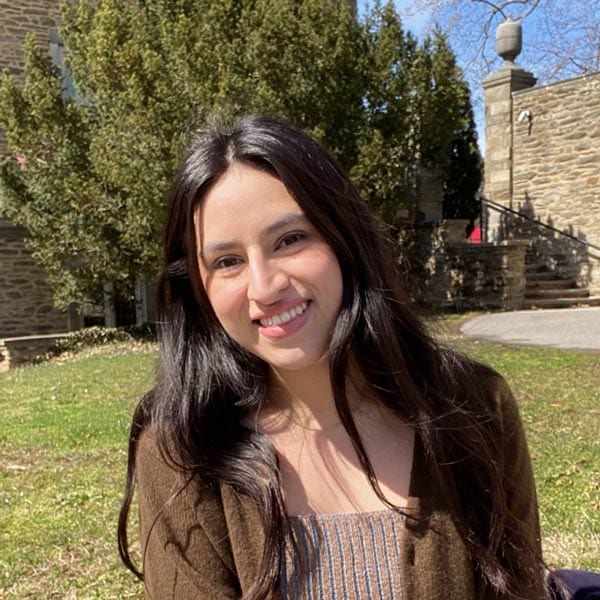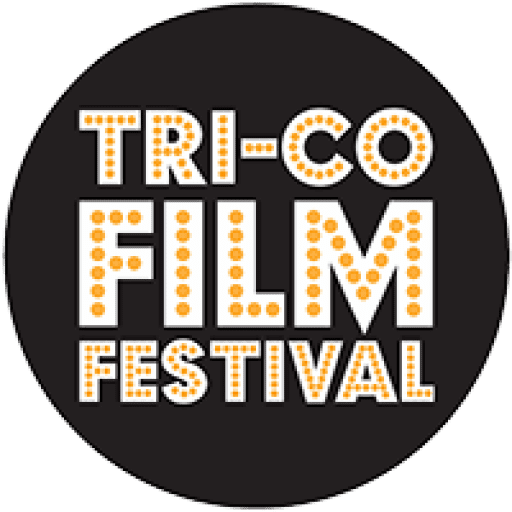
Author: Allison Torres
Kristal Sotomayor is one of the 10th Annual Tri-Co Film Festival’s jurors, working alongside Set Hernandez-Rongkilyo to curate and moderate discussion on student works. Kristal and I recently met to talk about their practice, their experiences in the industry, how they transitioned from being a student to the world of filmmaking, and their most recent project. Sotomayor is a bilingual Latinx documentary filmmaker, festival programmer, and film critic based in Philadelphia. They are part of Bryn Mawr’s Class of 2017. Currently they are working on post production of their documentary film Expanding Sanctuary which brings attention to the historic end to police surveillance organized by the nonprofit Juntos and the Latinx immigrant community in South Philadelphia.
Kritisal started working on their film Expanding Sanctuary after they graduated from Bryn Mawr and has been working on it for several years now. It’s about the sharing of the police database with Immigration and Customs Enforcement (ICE) and follows Linda Hernandez, an immigrants rights leader, and how she becomes the face of the campaign. They now work with the Philadelphia Latino Film Festival which they started working with as a junior at Bryn Mawr. Sotomayor started their film world involvement by volunteering with the Film Festival – after they graduated, they then interned with POV, the PBS documentary film series. They stated that after the internship they were able to be more involved with the PLFF due to their experience at the recent internship. Now they are the Program Director of the film festival and have had this position for three years. After graduation from Bryn Mawr, they also began working in freelance journalism and film criticism. Kristal has had their work published in Documentary Magazine, WHYY, is the founder of ¡Presente! Media, and is now on the editorial board for CineSPEAK.
At Bryn Mawr, Sotomayor was a Comparative Literature major with a film studies minor and said that their interest stemmed from the language requirement as this led to her having to take various Spanish classes. Then they went on to try to take some classes on journalism. These classes did not go over well and made her initially think that she did not want to be a part of the journalism field. After that she decided to look more into film studies, and since she was still interested in journalism, this is how they came to documentary film. After college they attended the Flaherty Film Seminar through Haverford’s HCAH. It was at the Flaherty when they realized that they loved documentary film. “That was the first time I ever talked to people in the industry. When I graduated doing this Haverford program at the Flaherty Seminar and a lot of the people that I met there have still been a big part of my career even now.” That same summer they participated in NextDoc, which is a program for emerging film directors of color in documentaries. “Those two opportunity really made me realize that I wanted to do documentaries and were a part of the reason why I got the internship with POV. Then POV kind of led to the rest of my career working out.”
When Sotomayor was attending Bryn Mawr they kept busy and were a part of various different clubs and activities, so it comes as no surprise that they have kept that same energy in their post-grad life. “Being in the film industry you kind of have to do multiple things. Especially when you’re starting out and when you’re a person of color because, it’s sad to say, but you need to be invaluable. If you do a lot of different things it makes you more invaluable because you have a wider expertise.” As a filmmaker, it can be difficult to make film your only occupation, so they often work an additional job such as teaching as a college professor, founding small production companies, or working in nonprofits. It is difficult to find sustainability in the industry to fund your film. Your job might not be related to the film industry. The reality is that no one is going to give you money to solely work on your film.
Presently in her career, she feels that she is still trying to make a name for herself and once she has more credits under her belt they would consider working on narrative film. “The barrier for entry for documentaries is significantly lower for people of color, queer folks, and women. It’s significantly lower than in narrative film.” Sotomayor stated that this was one of the reasons why they chose documentary since it would be easier to get funding and support as opposed to narrative. She still states that she loves documentaries and most of her current work does revolve around documentaries. When speaking more on her influences Sotomayor mentioned Cecila Aldarondo, Garret Bradley, Melina Leon’s Song Without a Name, and Claudia Llosa’s Milk of Sorrow.
Sotomayor told me that they “practice transformative filmmaking that humanizes and validates the lived experiences of underrepresented communities.” When we met with them, they shared how their new film Expanding Sanctuary attempted to achieve this. The film worked with community partners Juntos, which is an immigrants rights nonprofit in South Philadelphia. From the beginning of the filming process Sotomayor told them that she wanted to work with them and that it would be a learning experience for both parties. “I want to work with you. I want you to be okay with what will be in the film. I want you to tell me to turn off the camera if you need me to turn off the camera.” Krisital wanted to ensure that they were being transparent in their filming process. Before meetings Kritsal would announce that they were filming and would try their best to ensure that no one who didn’t want to be filmed was being filmed. “For me, trying to practice transformative filmmaking is making sure that you are very transparent with everybody throughout the entire process of what you’re doing. That isn’t done very often.”
Throughout the process the team has tried to offer community screenings which has been complicated due to the pandemic. The pandemic has disrupted any timeline that she had for her documentary but in the end they view this as being a good thing for the film. It allowed for the editing process to slow down and take a step back. Ideally, Sotomayor wanted to premier the film last year and now they are looking to premier next year. This set back in the timeline has allowed for them to have more time with the footage and get more input from other people. Sotomayor now feels that the story is stronger, the chosen footage in the film is more powerful, and that the narrative arc is better. “It also made me realize that I need to slow down with the film. It has been three year now with the same film, the same footage, but having that ability to slow down and really think about the story has made a world of a difference.”
